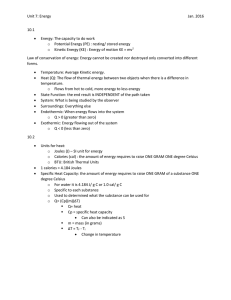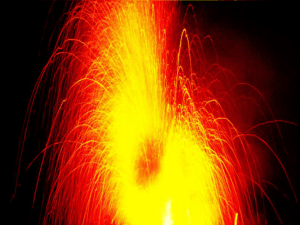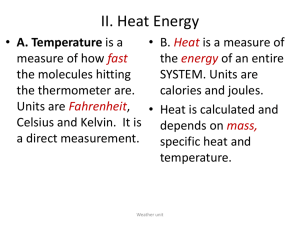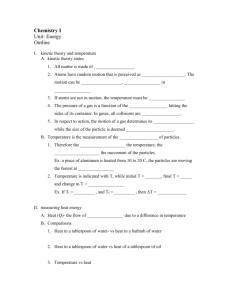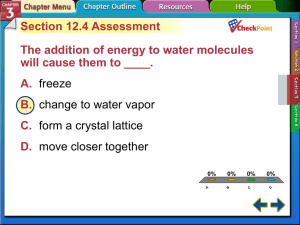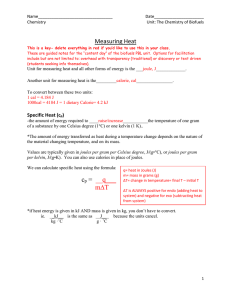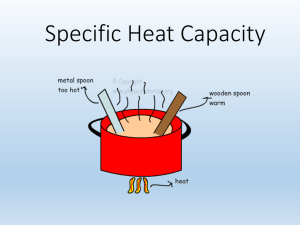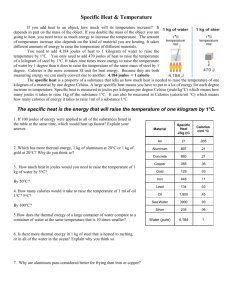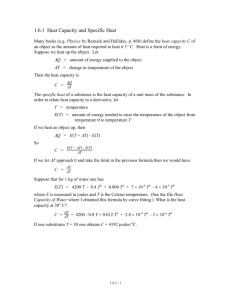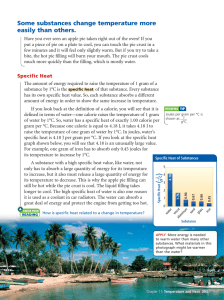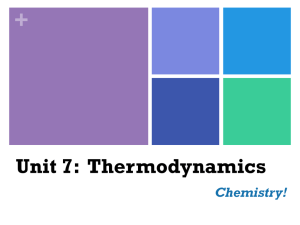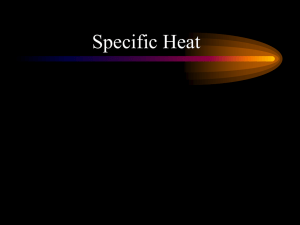Temperature and Heat
advertisement
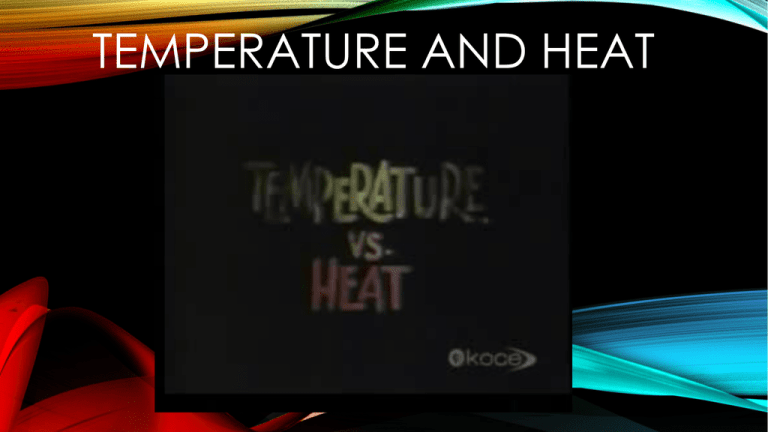
TEMPERATURE AND HEAT TEMPERATURE Temperature is the intensity or degree of heat generally measured by an instrument called a thermometer. Heat flows spontaneously from an object at a higher temperature to an object at a lower temperature. THERMOMETRY Temperature measures the average kinetic energy of the particles in a substance. At the same temperature the average kinetic energy of the particles in a substance is the same. Kinetic Energy = ½ mv2 Lighter molecules move faster Heavier molecules move slower An increase in temperature causes molecules to move faster. An decrease in temperature causes molecules to move slower. FIXED POINTS ON A THERMOMETER Freezing point of water: temperature at which water changes from a liquid to a solid. (ice-water equilibrium) at 1 atmosphere of pressure (standard pressure) Boiling point of water: temperature at which water changes to a gas. (steam-water equilibrium) at 1 atmosphere of pressure. The space between these reference points is divided evenly into degrees. Absolute zero: temperature at which all molecular motion ceases. Theoretically the lowest possible temperature. THREE TEMPERATURE SCALES Celsius /Fahrenheit Conversions 1000C=1800F 0C= 0F= 5/9(F-32) 9/5C + 32 Celsius/Kelvin Concersions 1000C=100K 0C=K-273 K=0C+ 273 (table T) PRACTICE TIME Try These Answers: 1. 59 0 F = ? 0C 1. 2. 60 0C= ? 0F 2. 140 3. 10 0 C = ? K 3. 283 4. -23 0 C = ? K 4. 250 5. 300 K= ? 0 C 5. 27 15 HEAT Heat is measured quantitatively by the change in temperature it can produce in a given mass of water. Non-SI unit for heat is the calorie. Calorie is defined as the amount of heat needed to raise the temperature of 1.0 gram of water by 1.0 degree Celsius, 1 kcal =1000 calories (food calorie) SI unit for heat is the joule. 1 calorie = 4.18 joules Calorimeter is used to determine the quantity of heat given off or absorbed in a chemical reaction. SPECIFIC HEAT Specific heat of a substance is the number of calories/joules required to raise the temperature of one gram of a substance by one degree Celsius. Specific heat of water is 1.0 calorie/gram 0C = 4.18 Joules/gram 0 C (table B) Specific heat of aluminum is .214 calories/gram 0 C = .895 Joules/gram 0 C Heat gained or lost by a substance= (mass of substance)(specific heat for substance)(change in temperature) Table T HEAT EQUATION: Q= M C ▲T Try this: How many calories are released when 50.0 grams of water are cooled from 75.0 to 35.0 degrees Celcius? Solution: Q= m c ▲T Q= (50.0 grams) (4.18 Joules/gram 0 C)(40.0 0 C) Q= 8360 Joules
